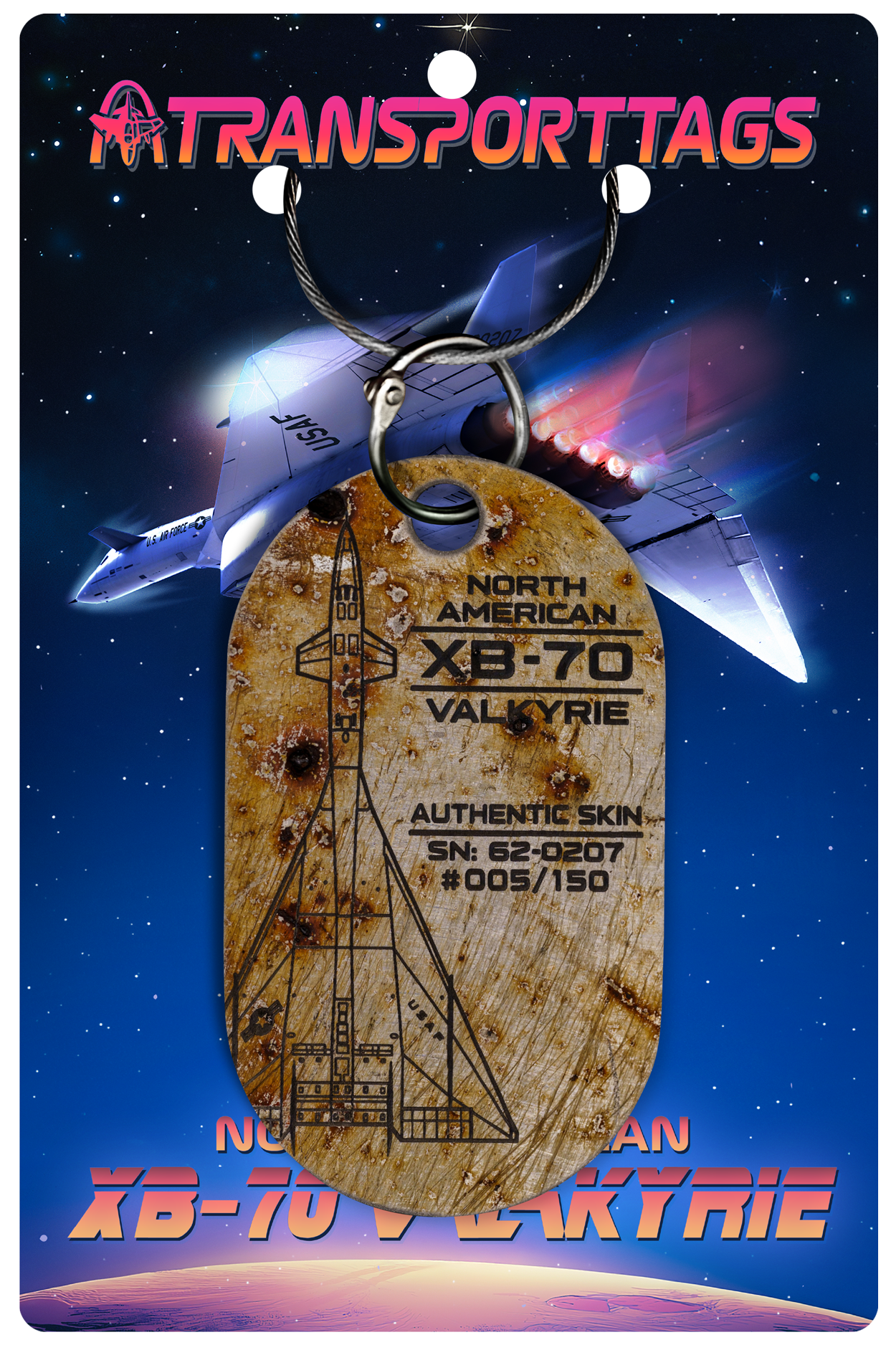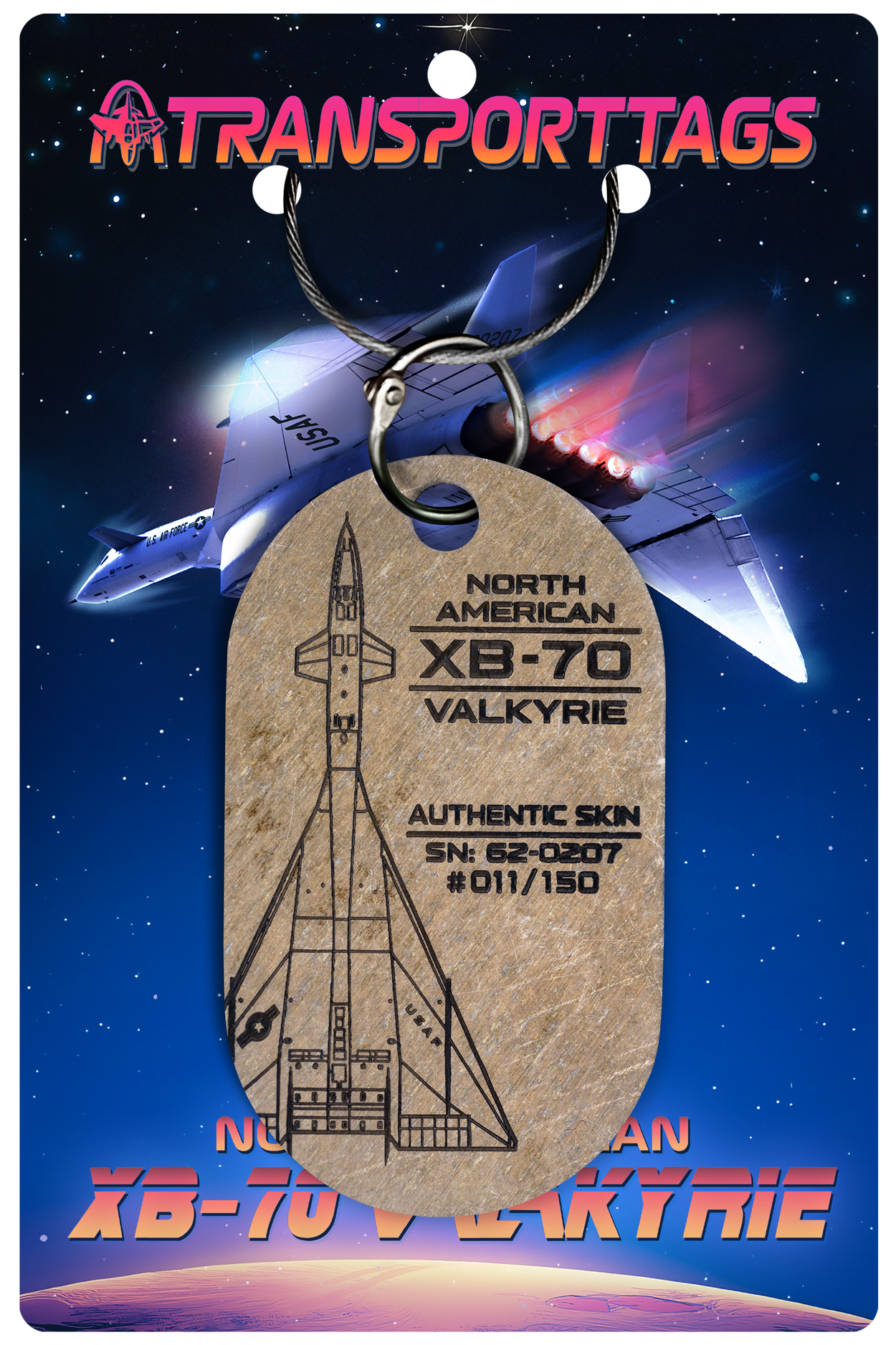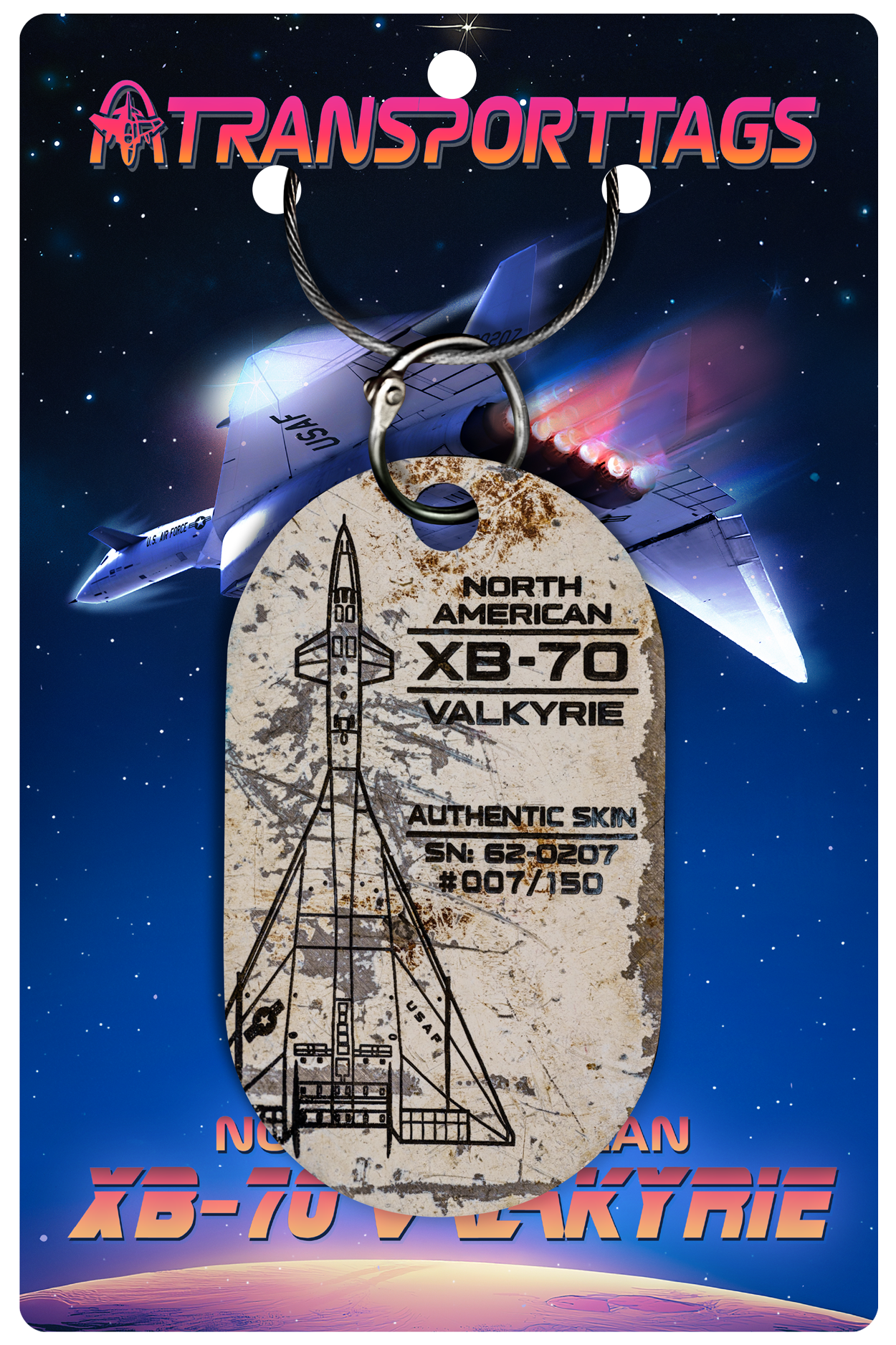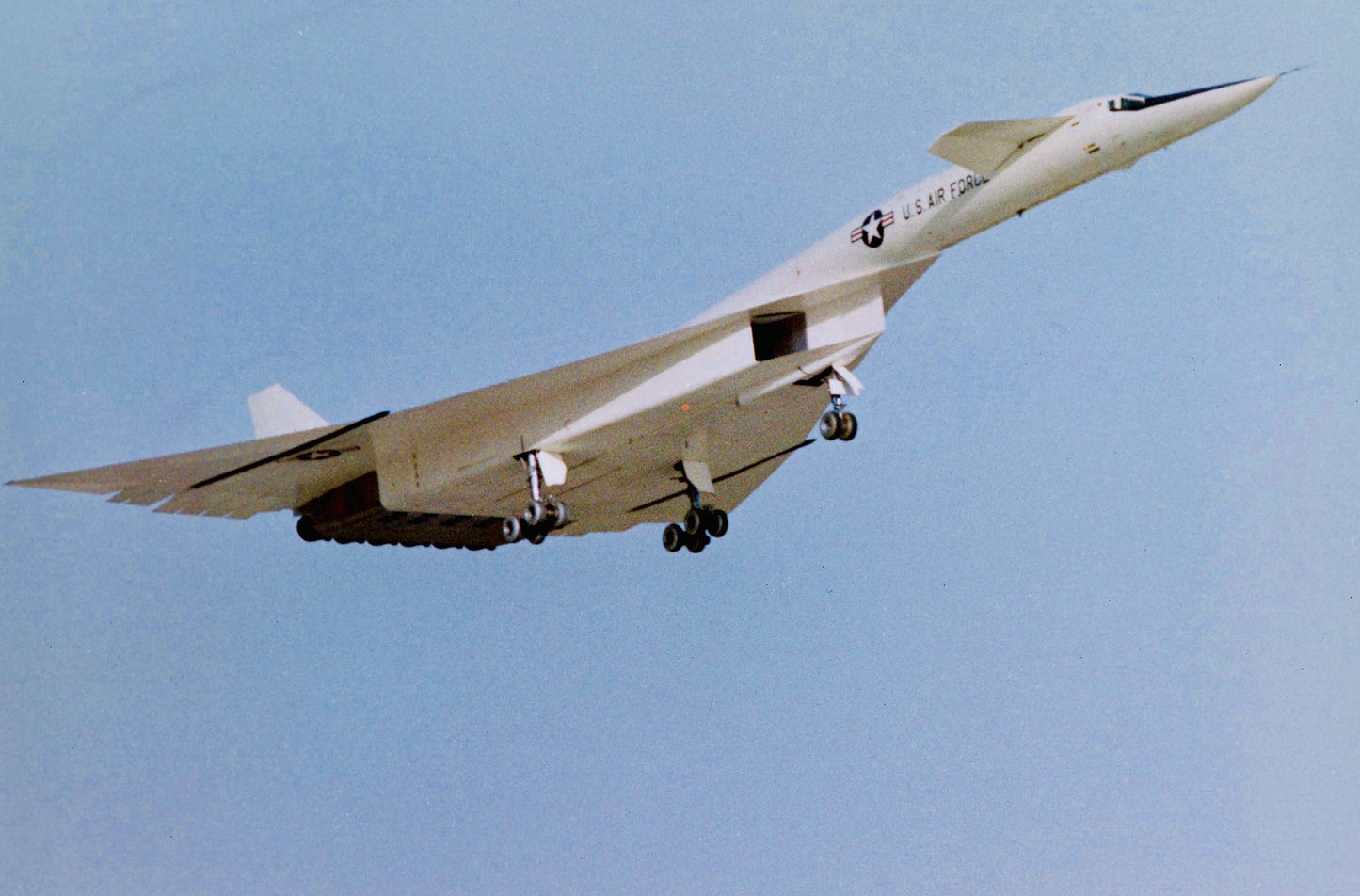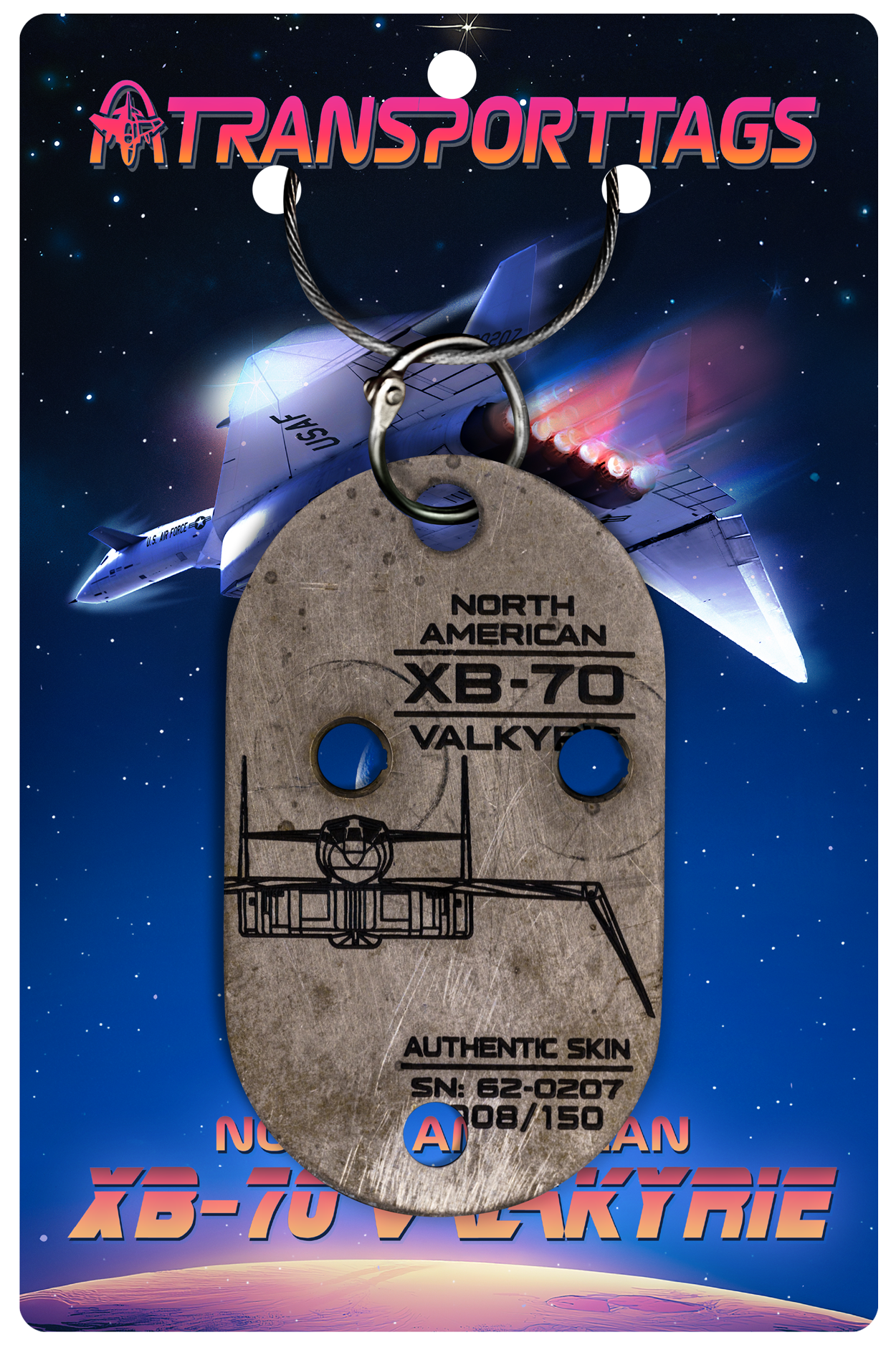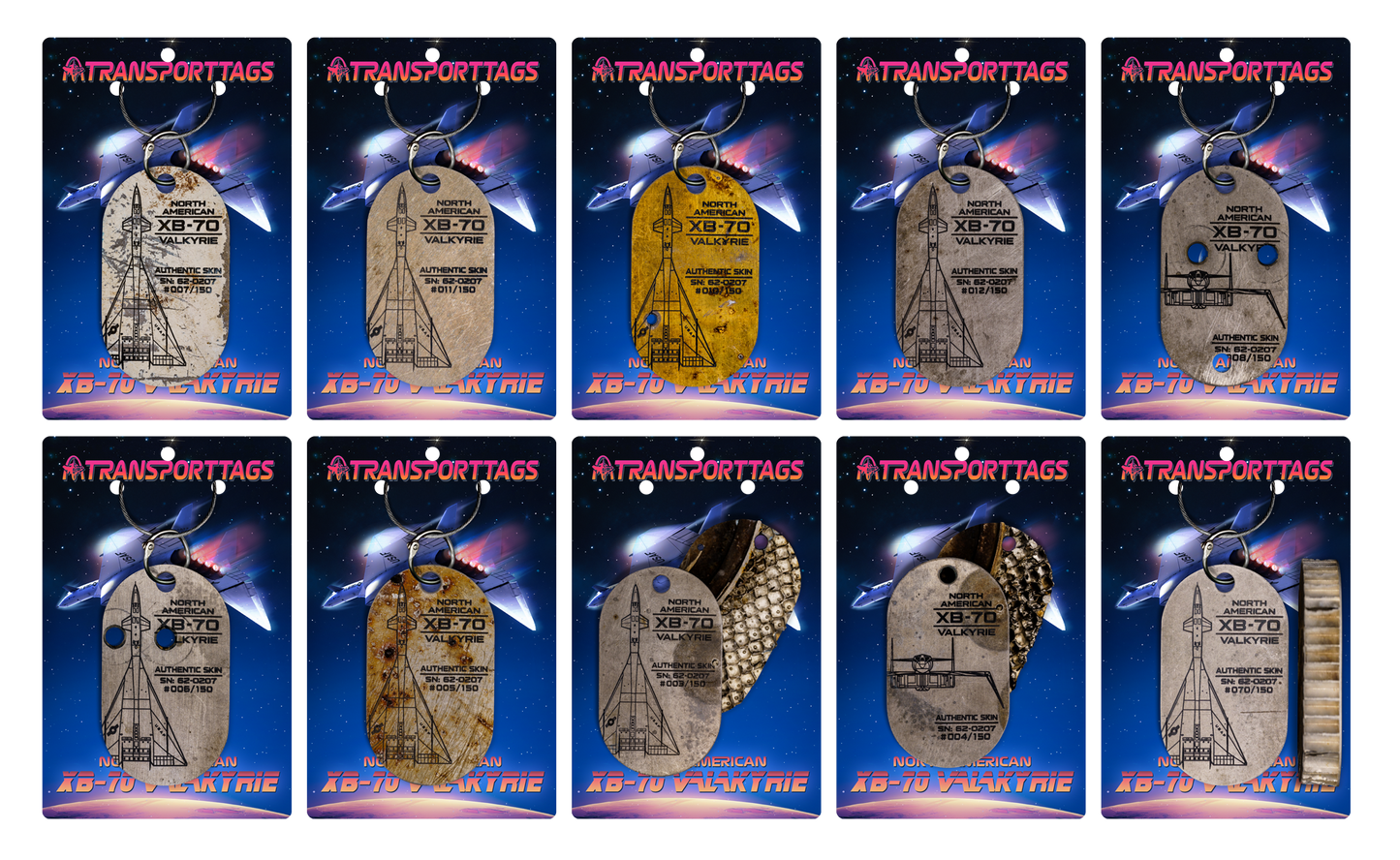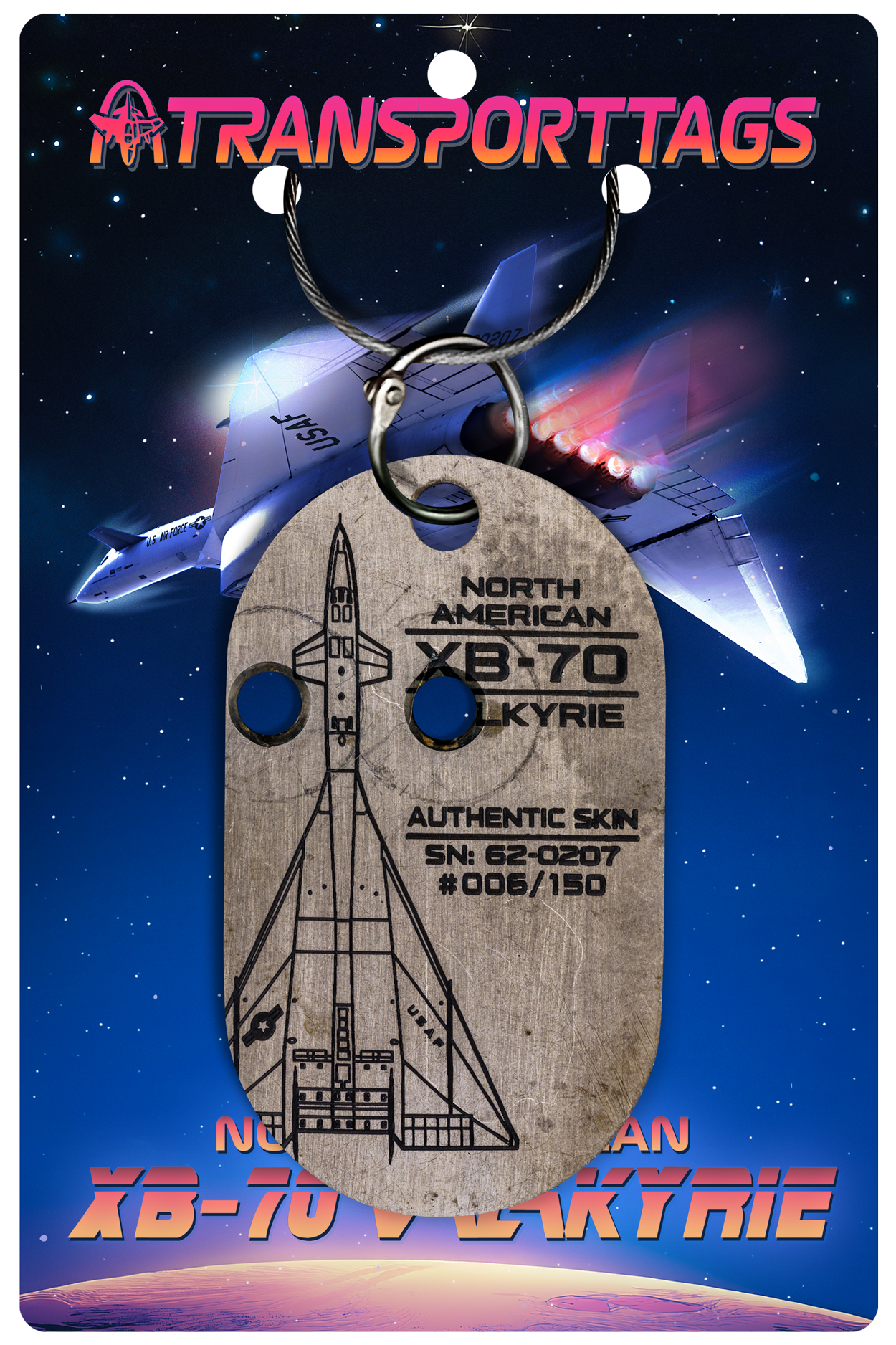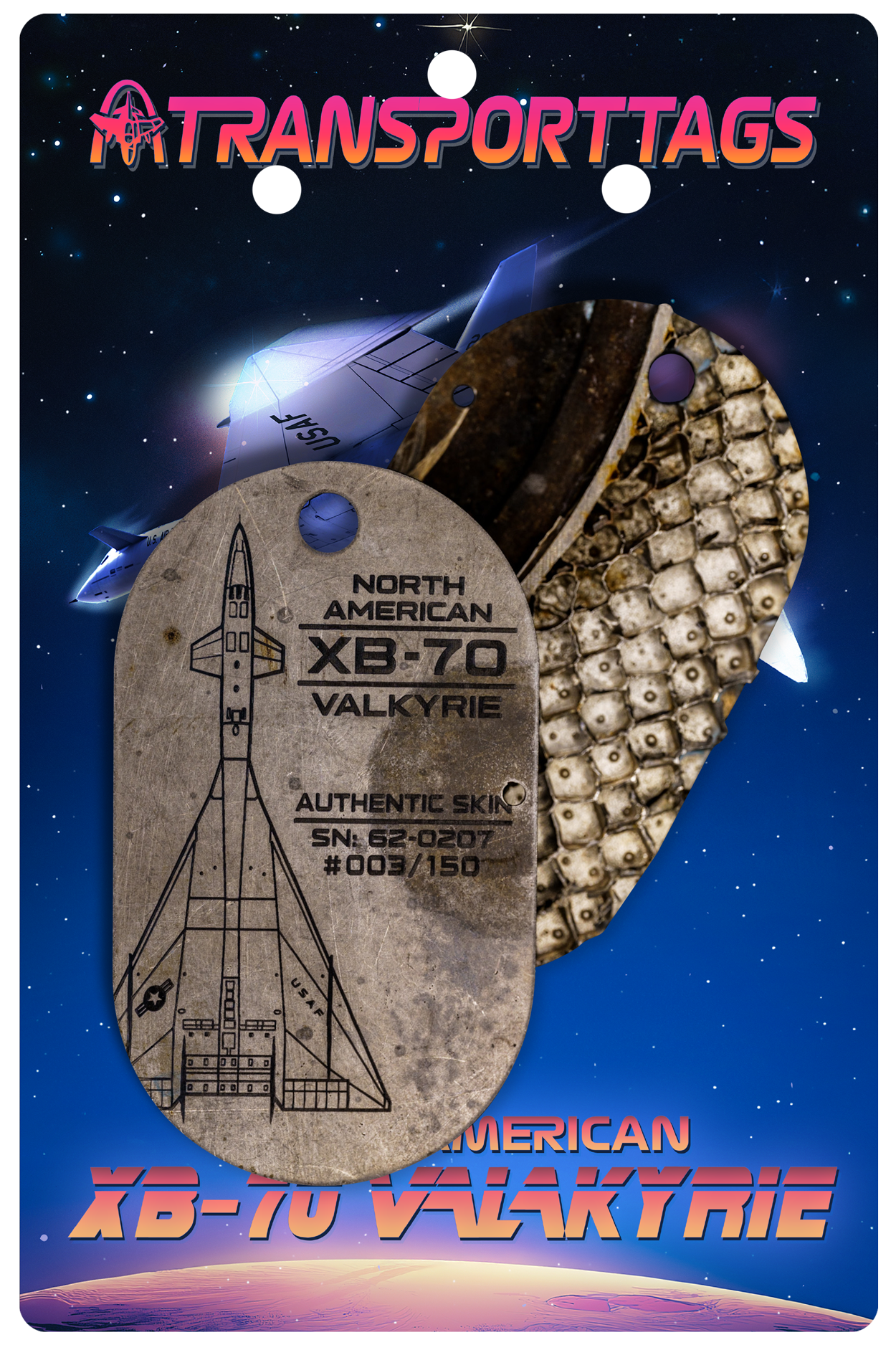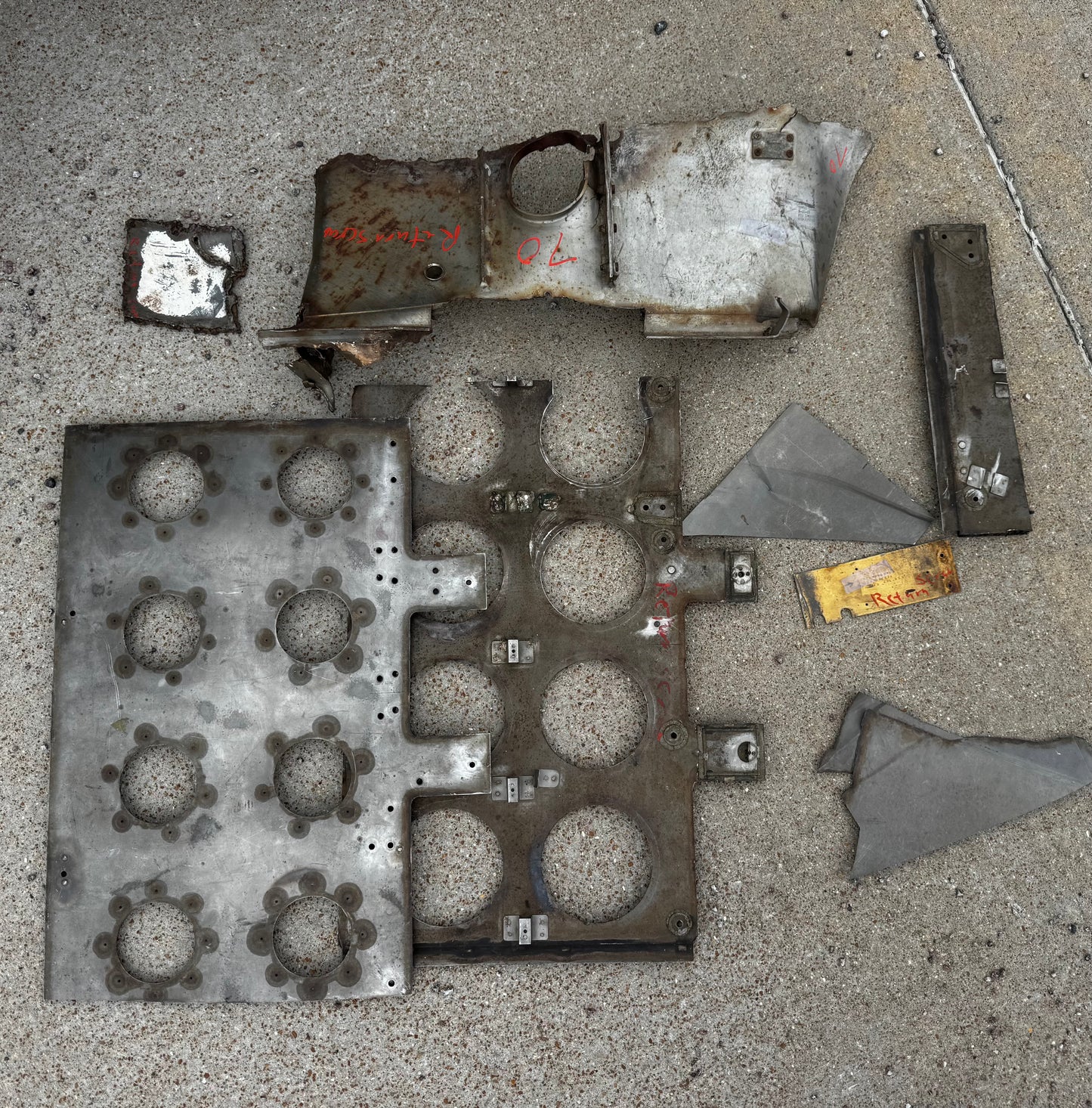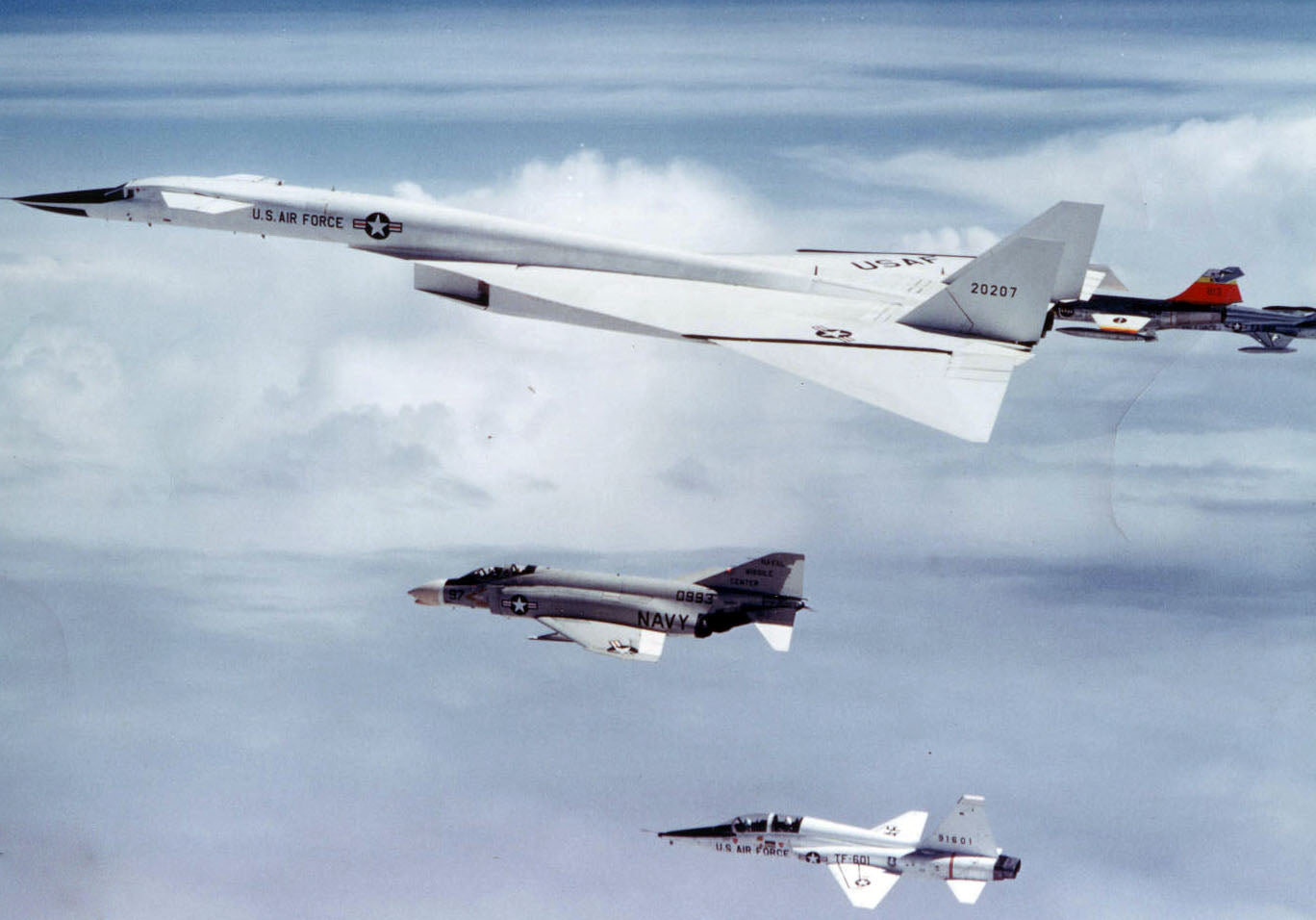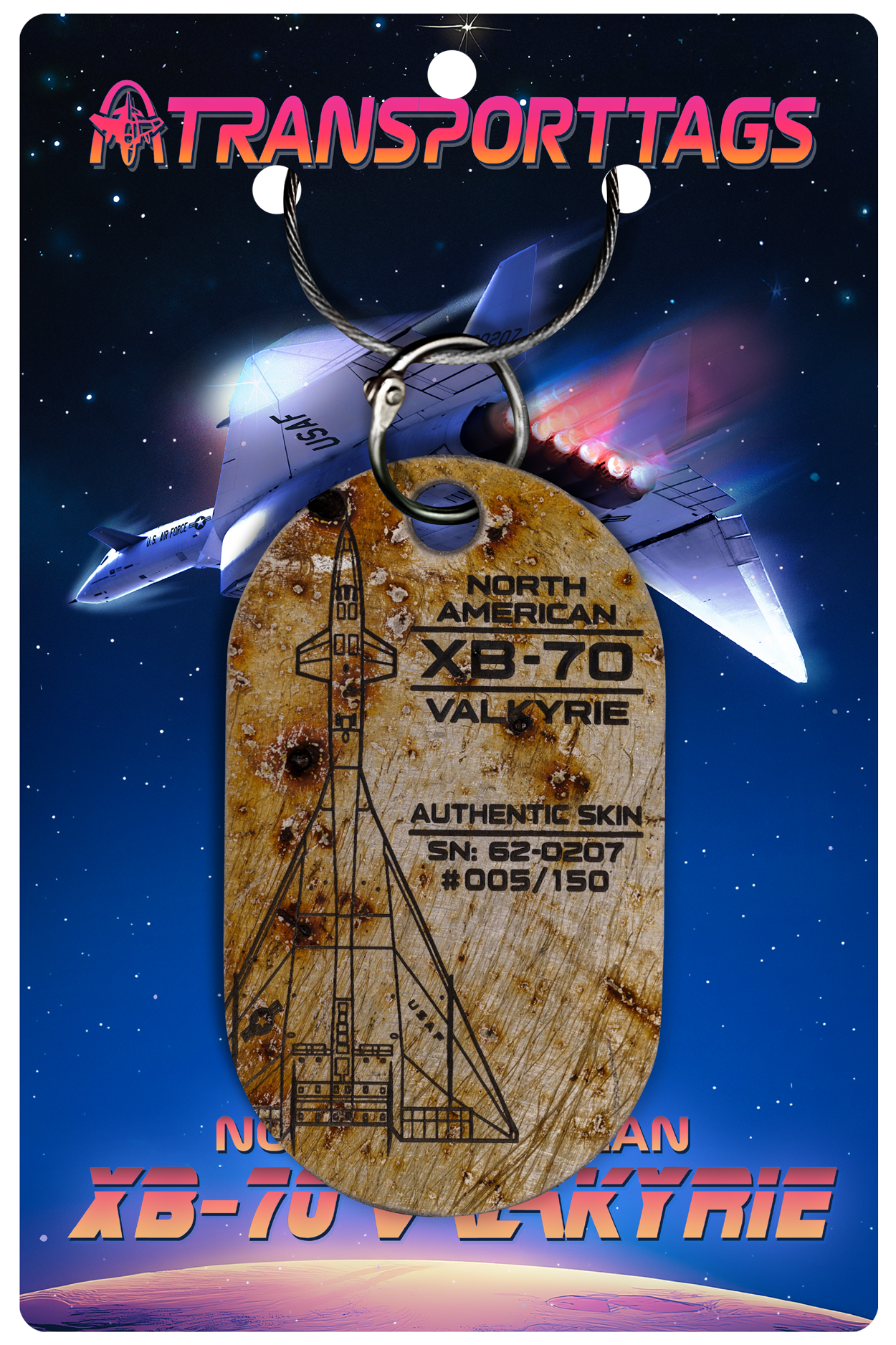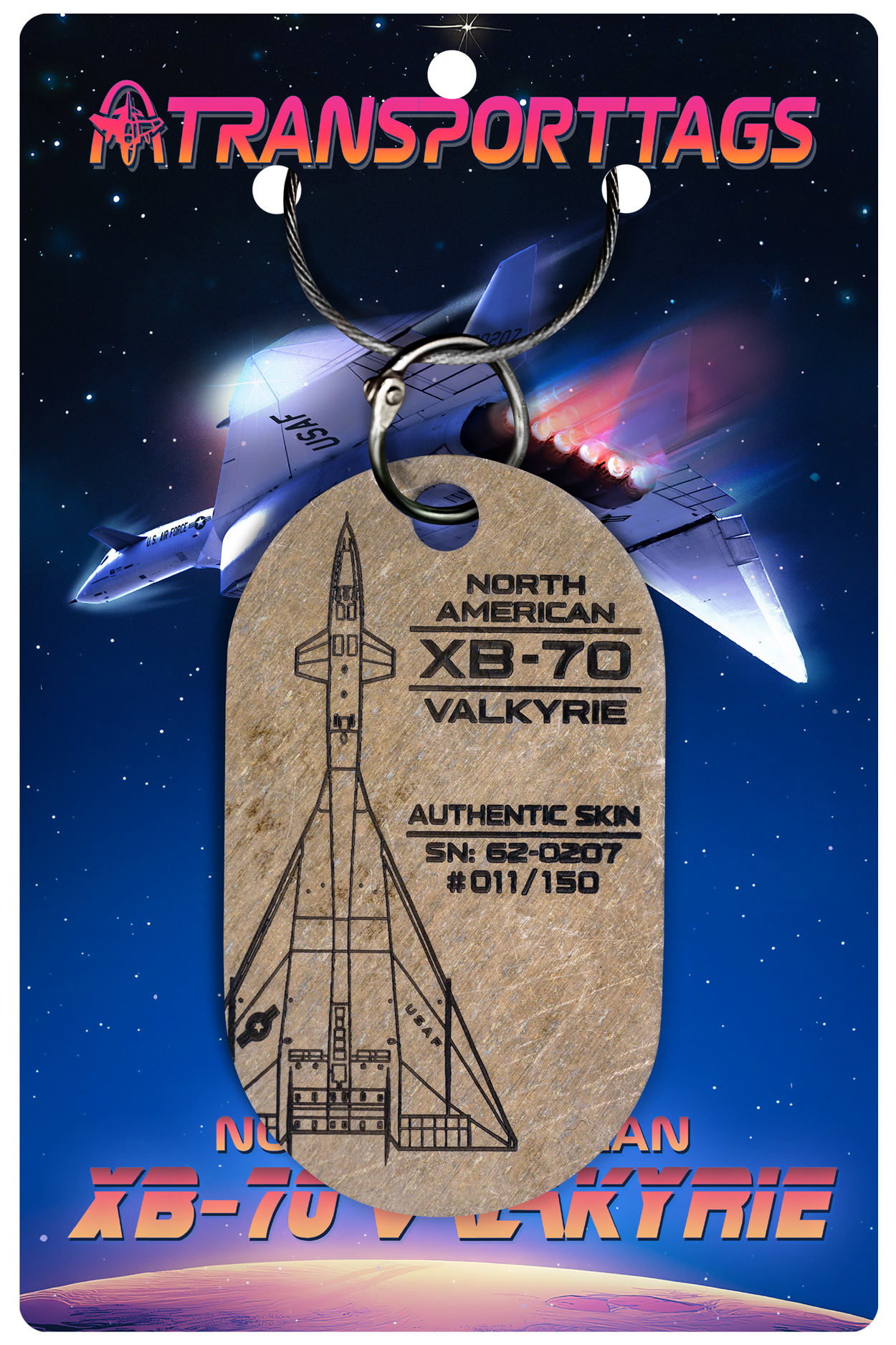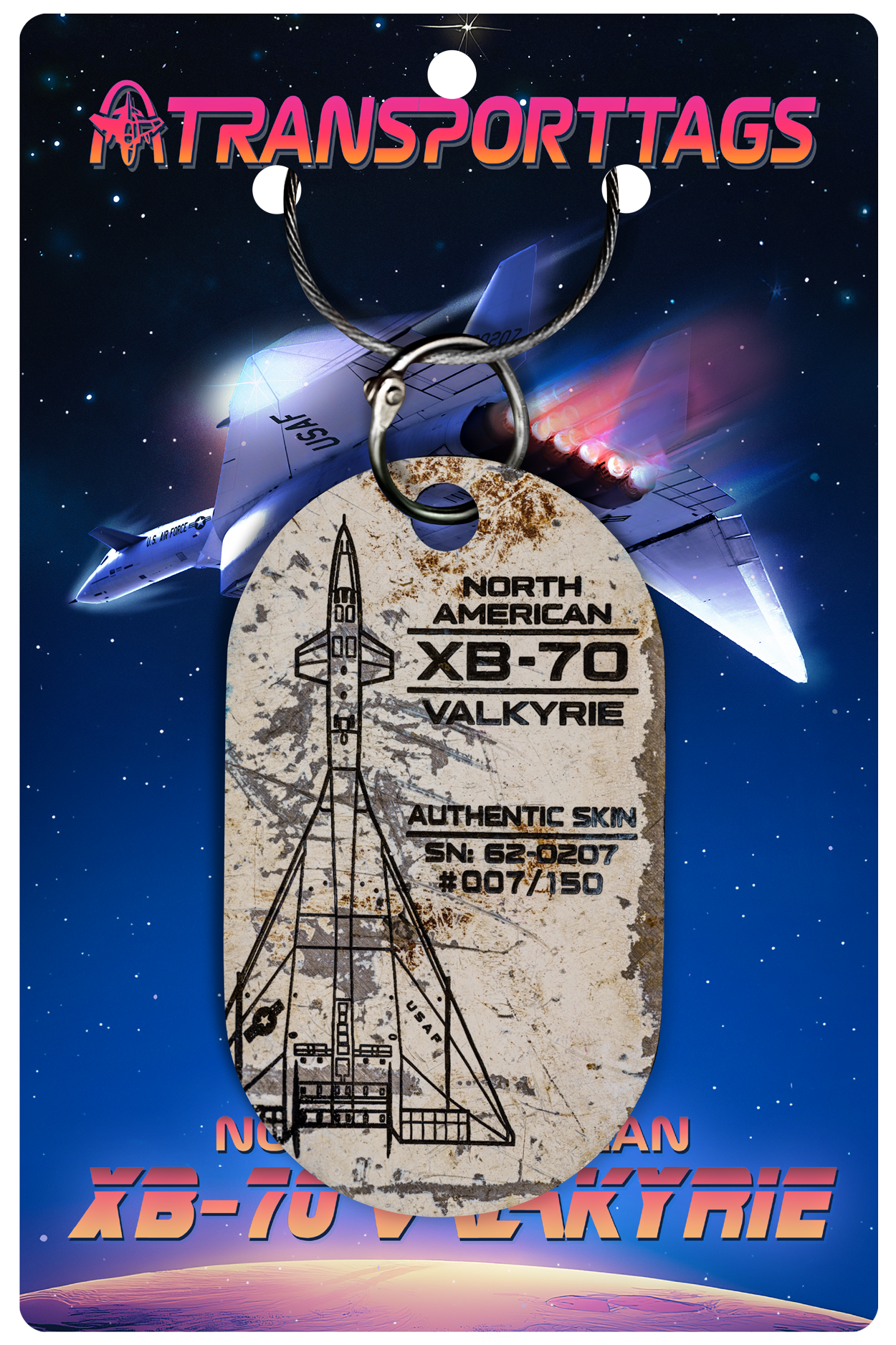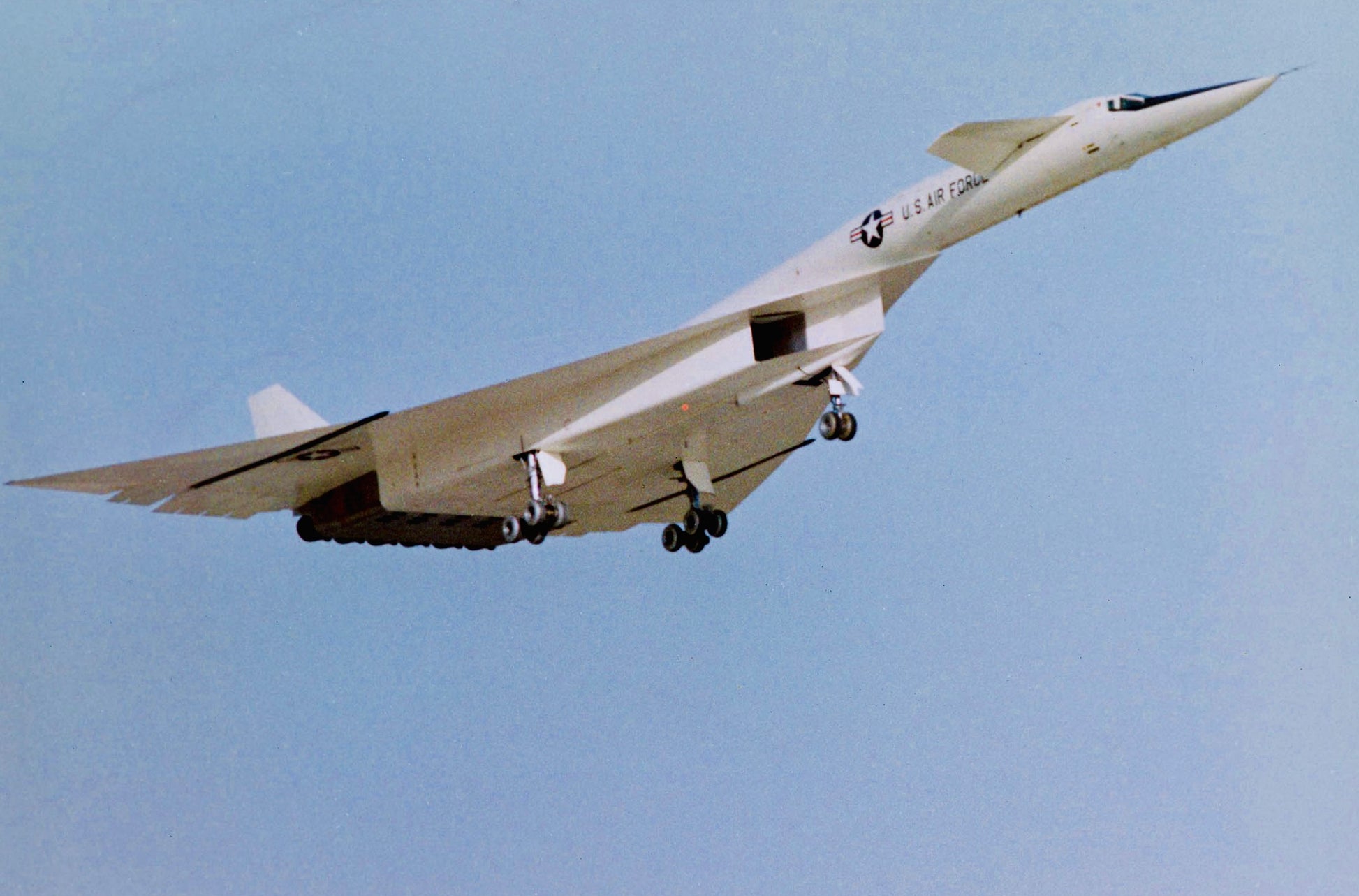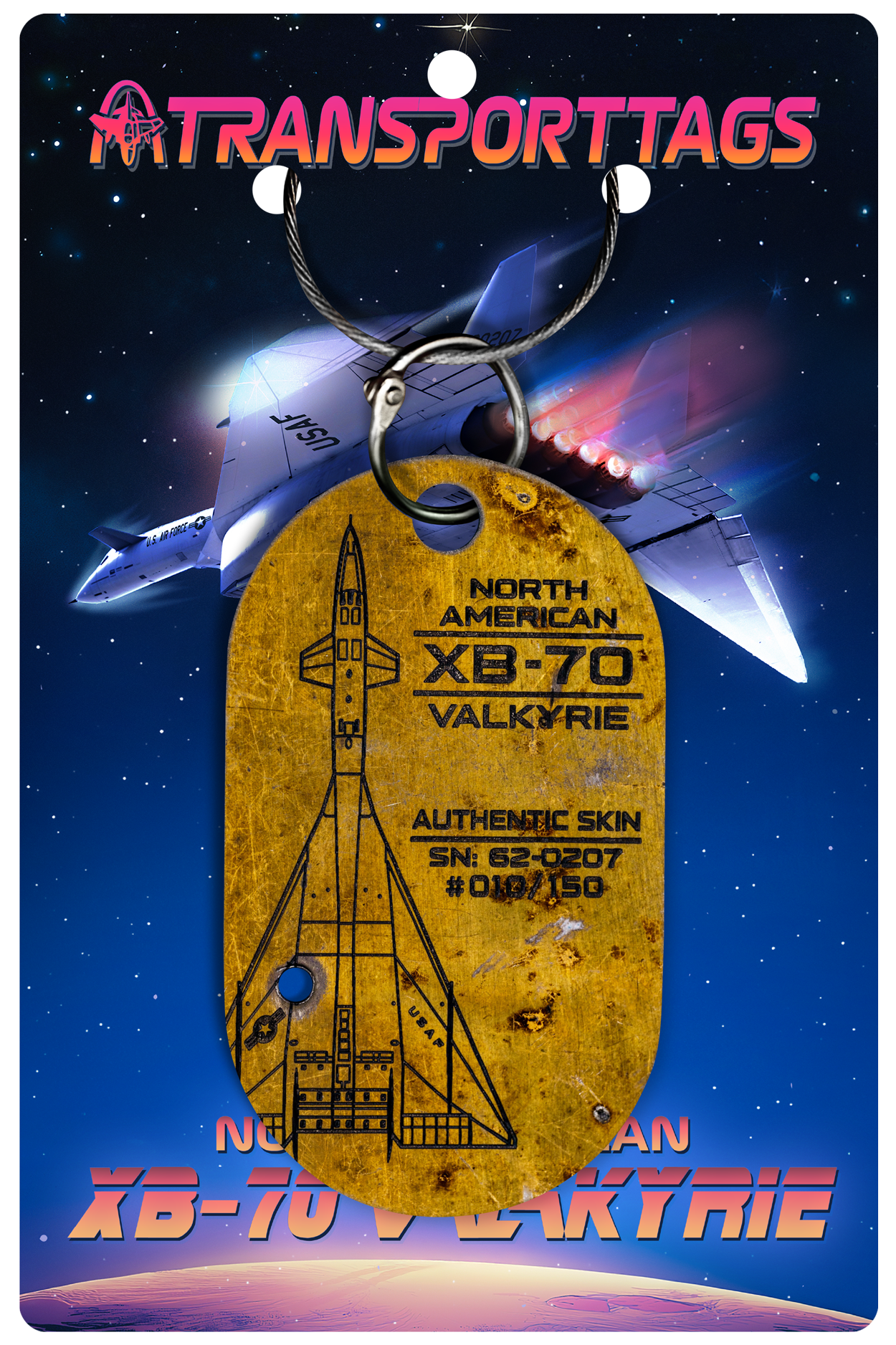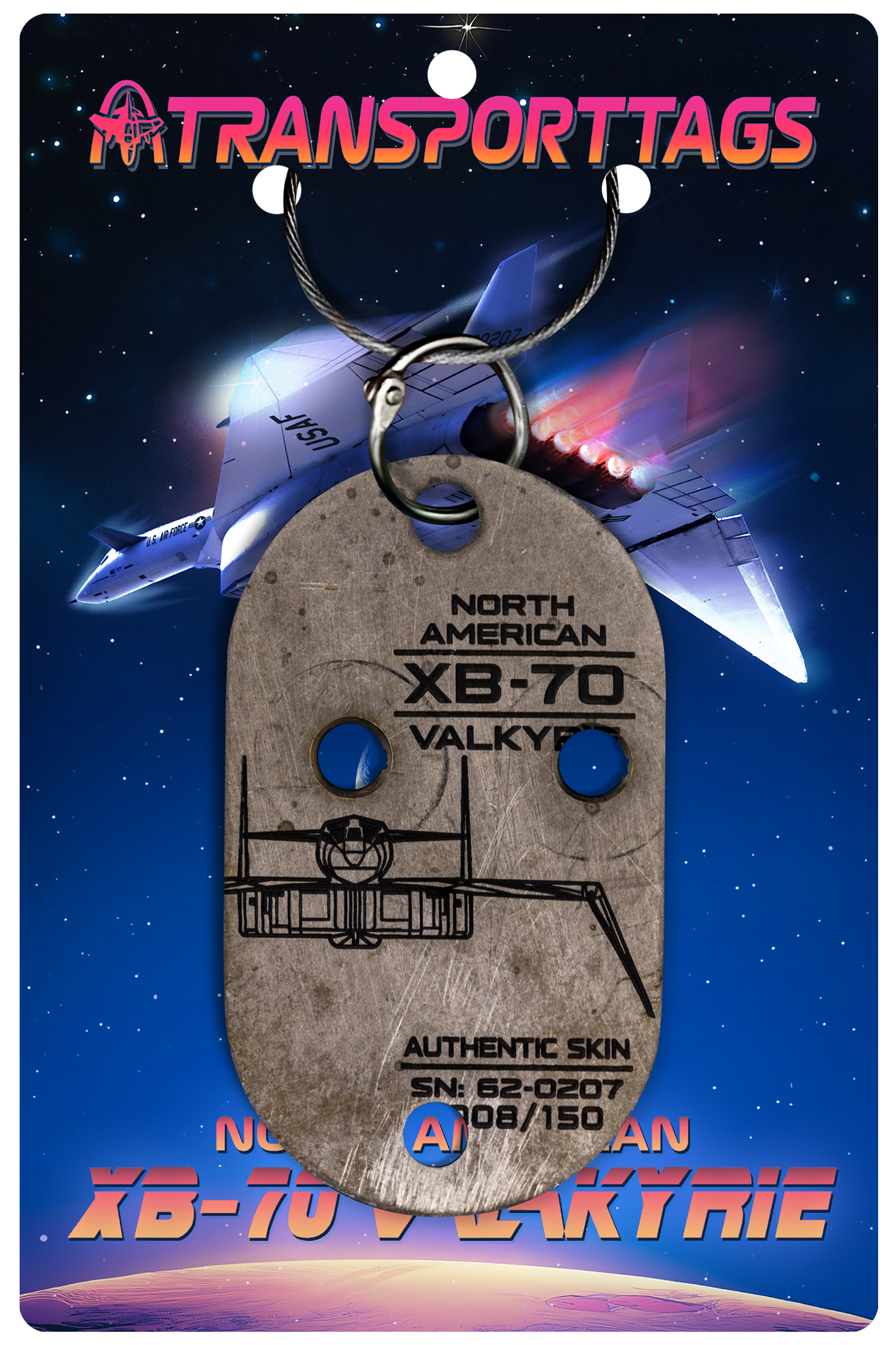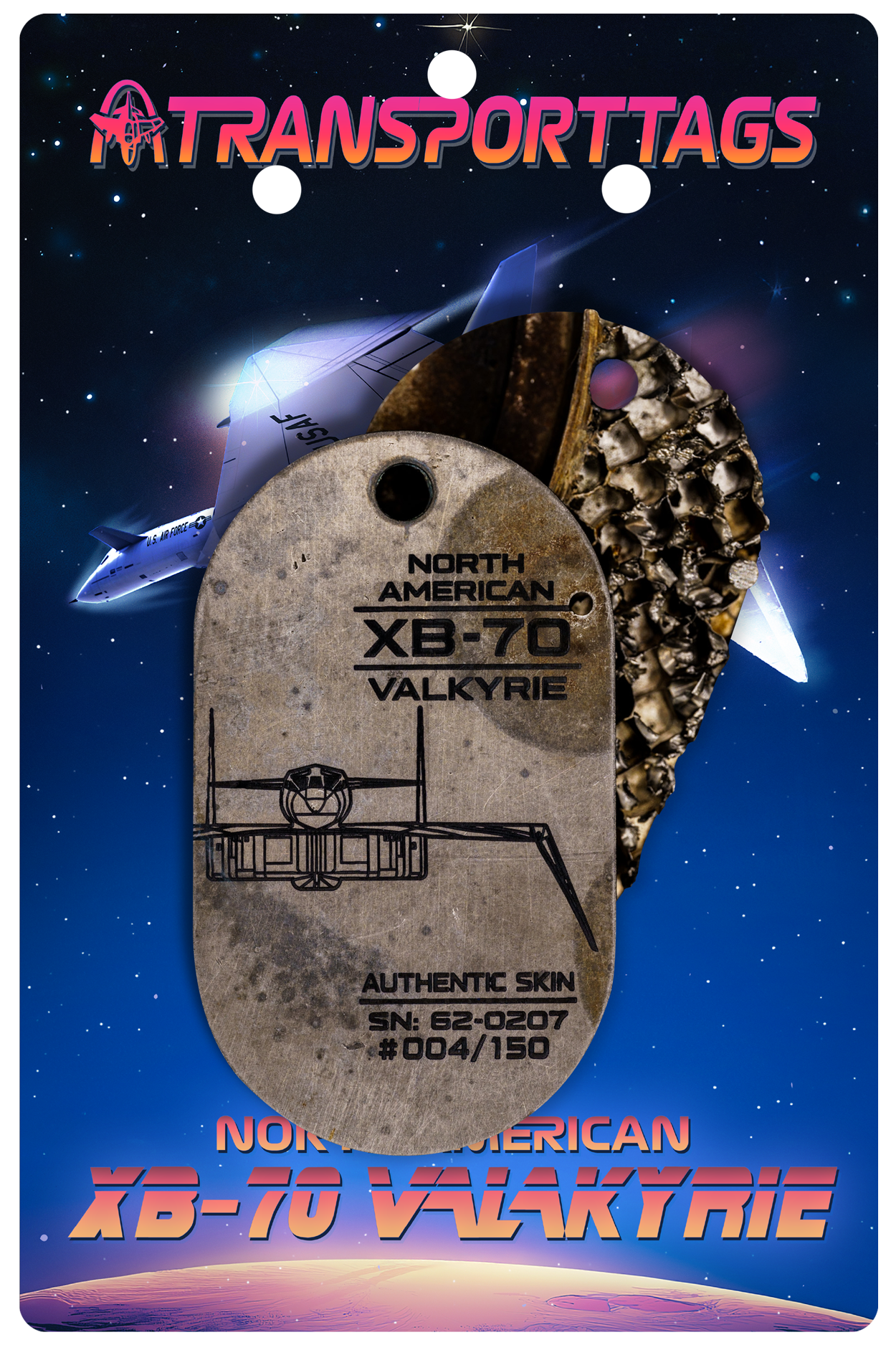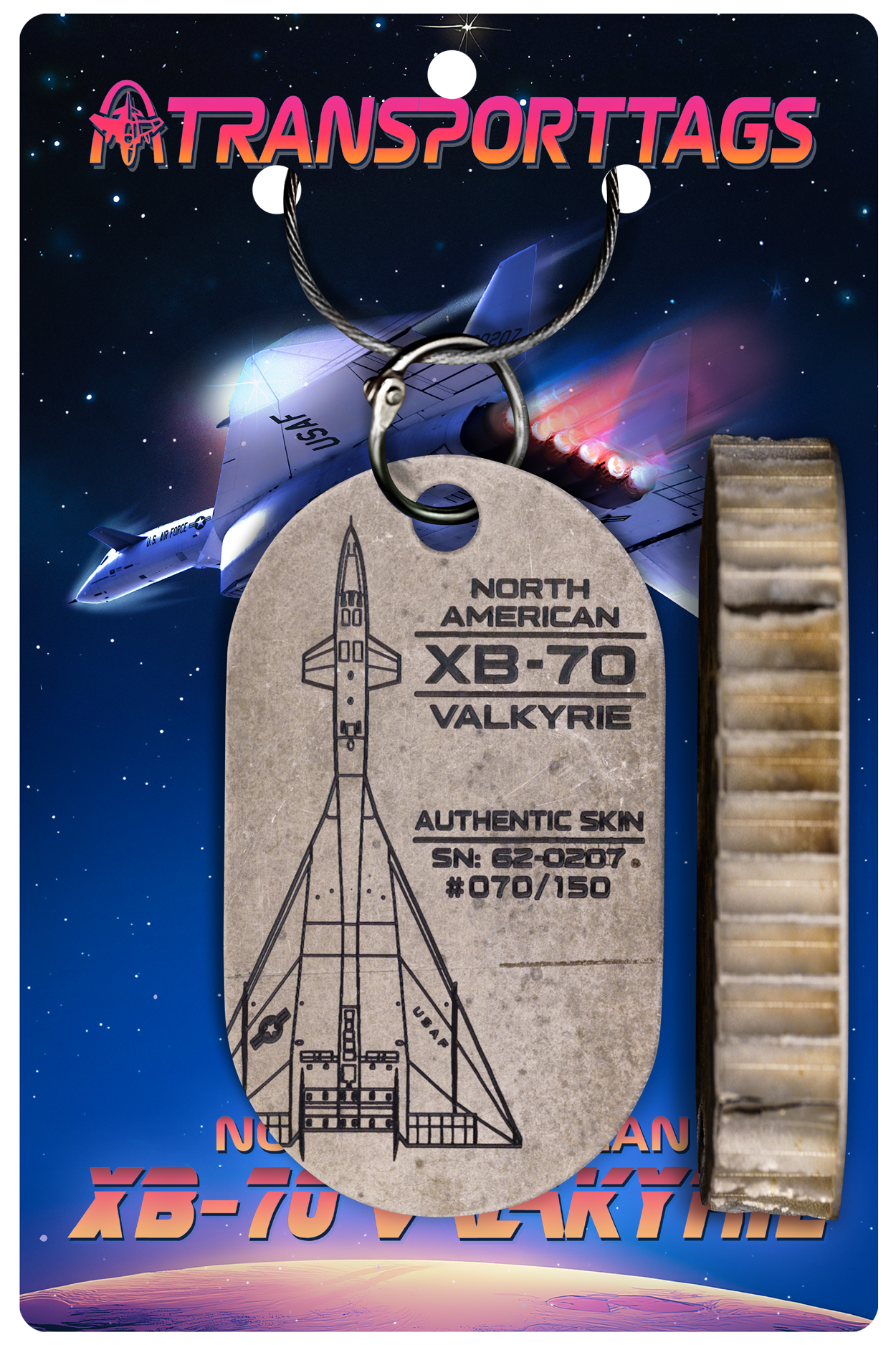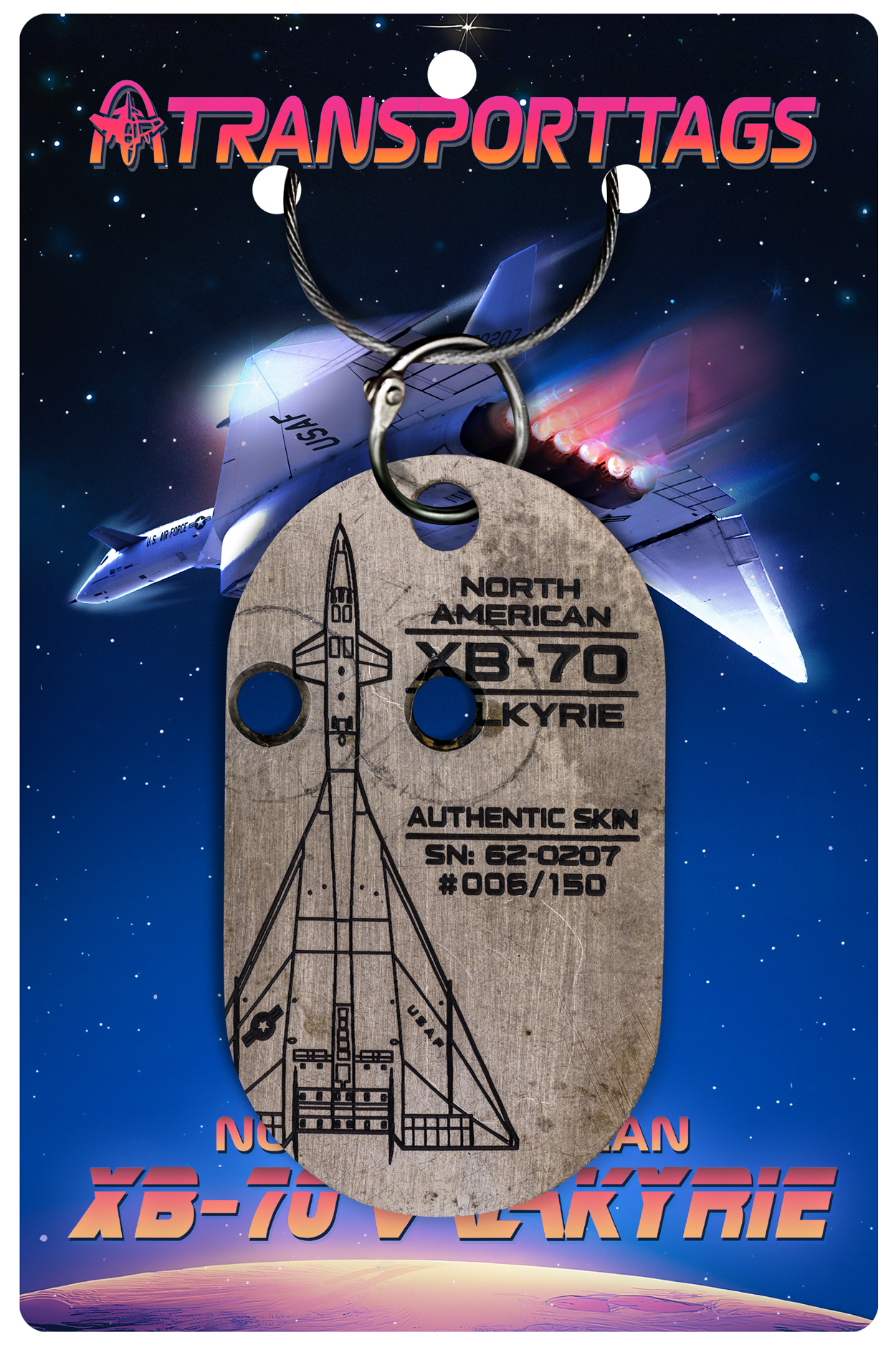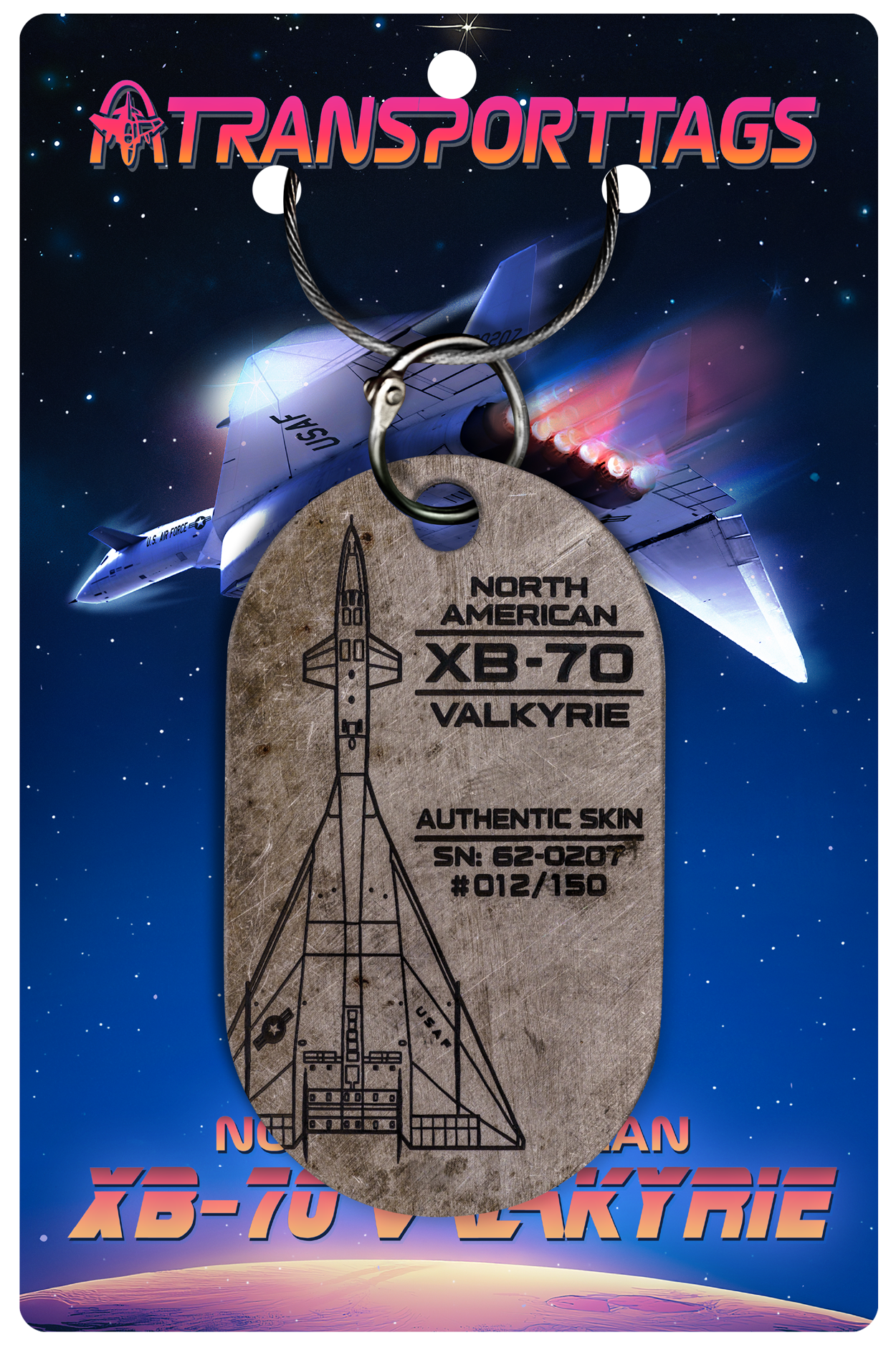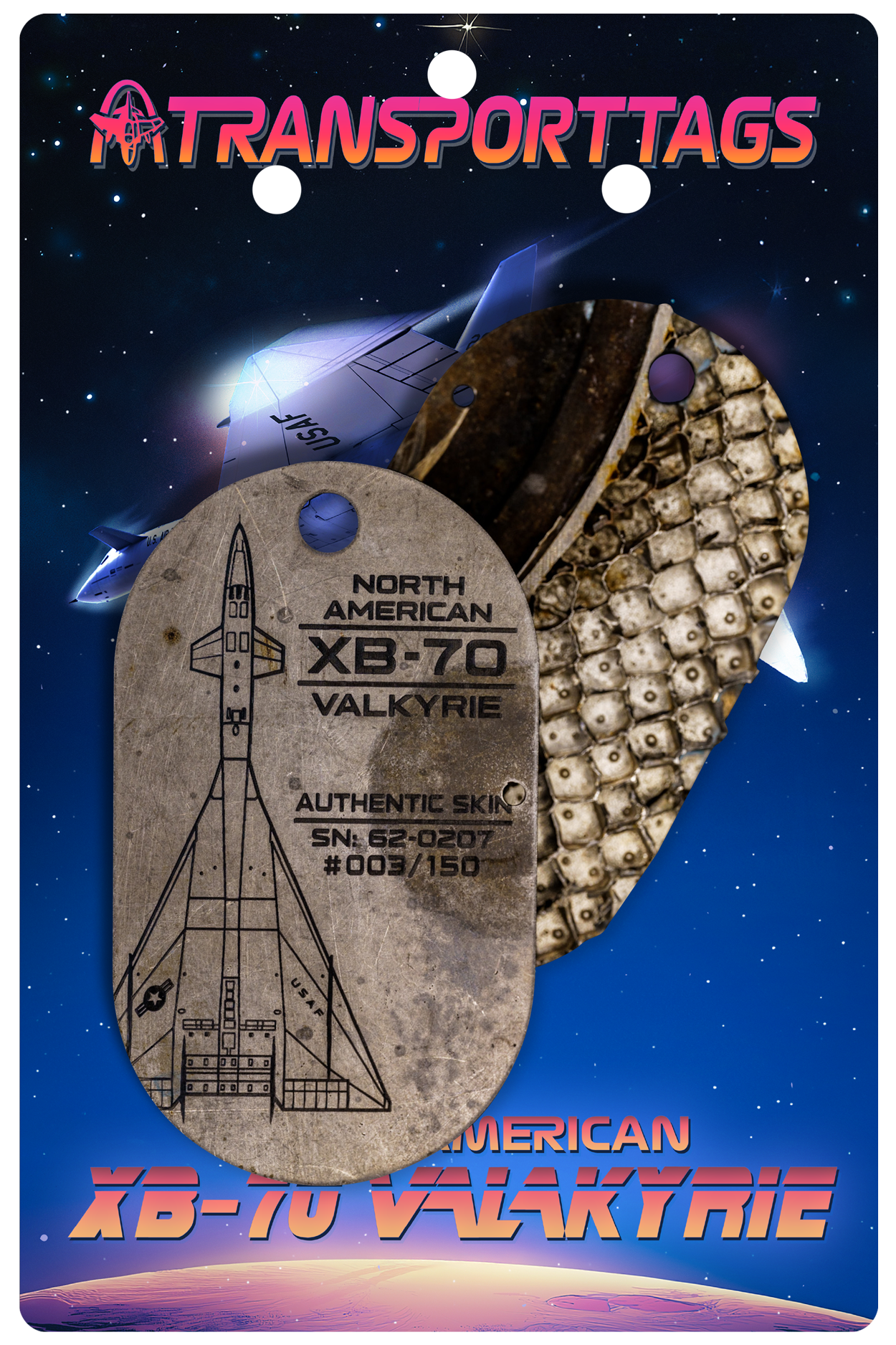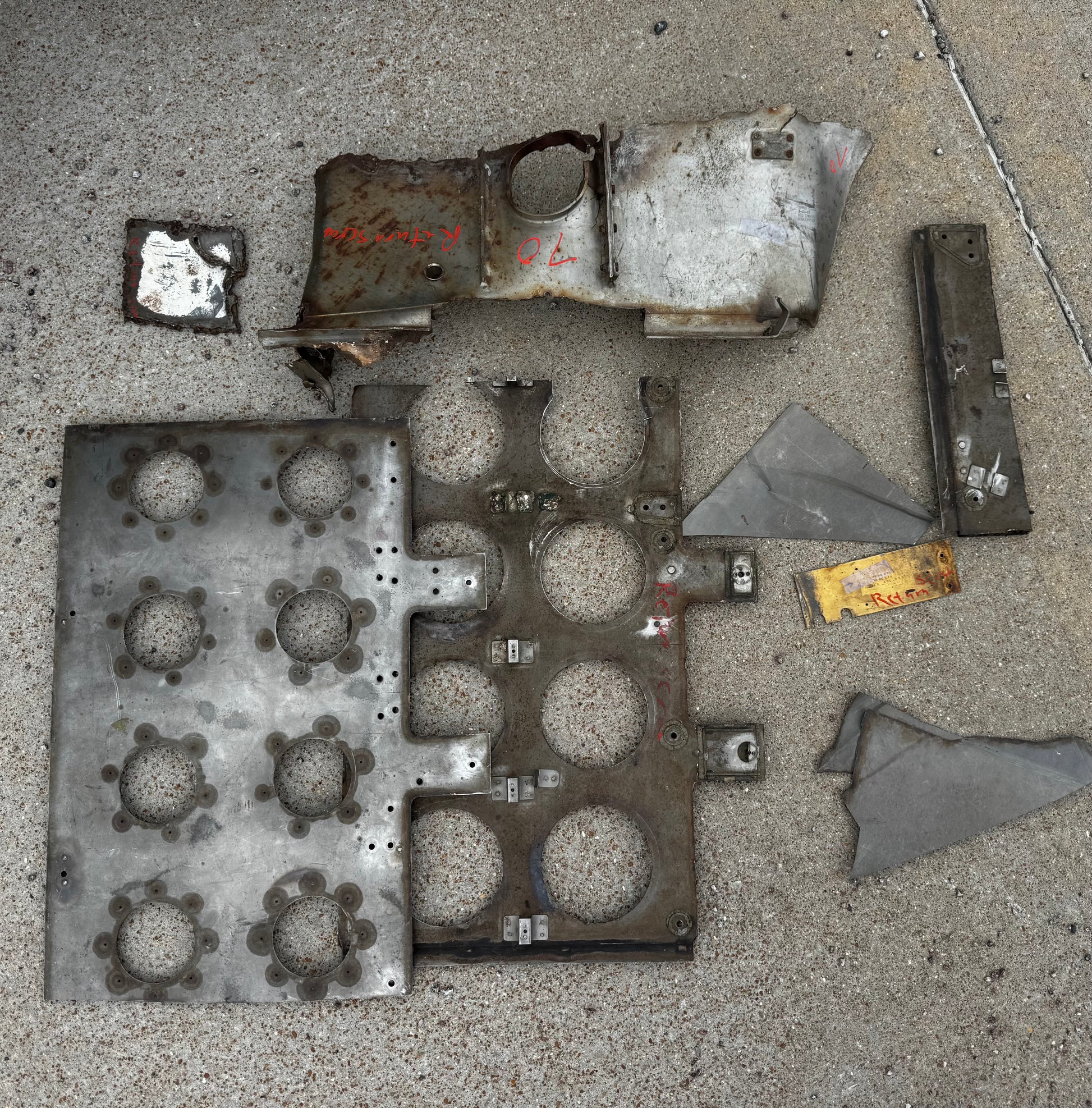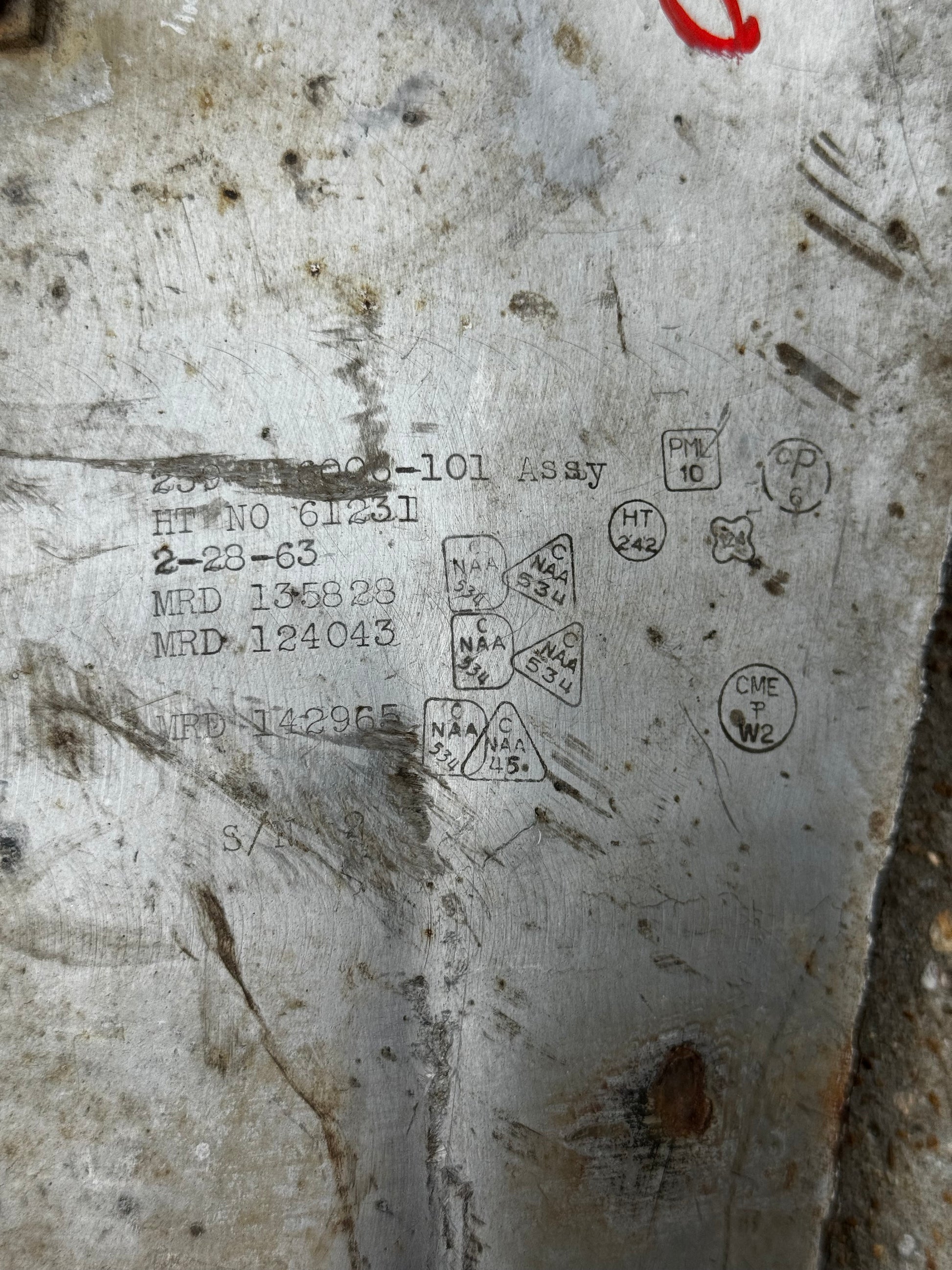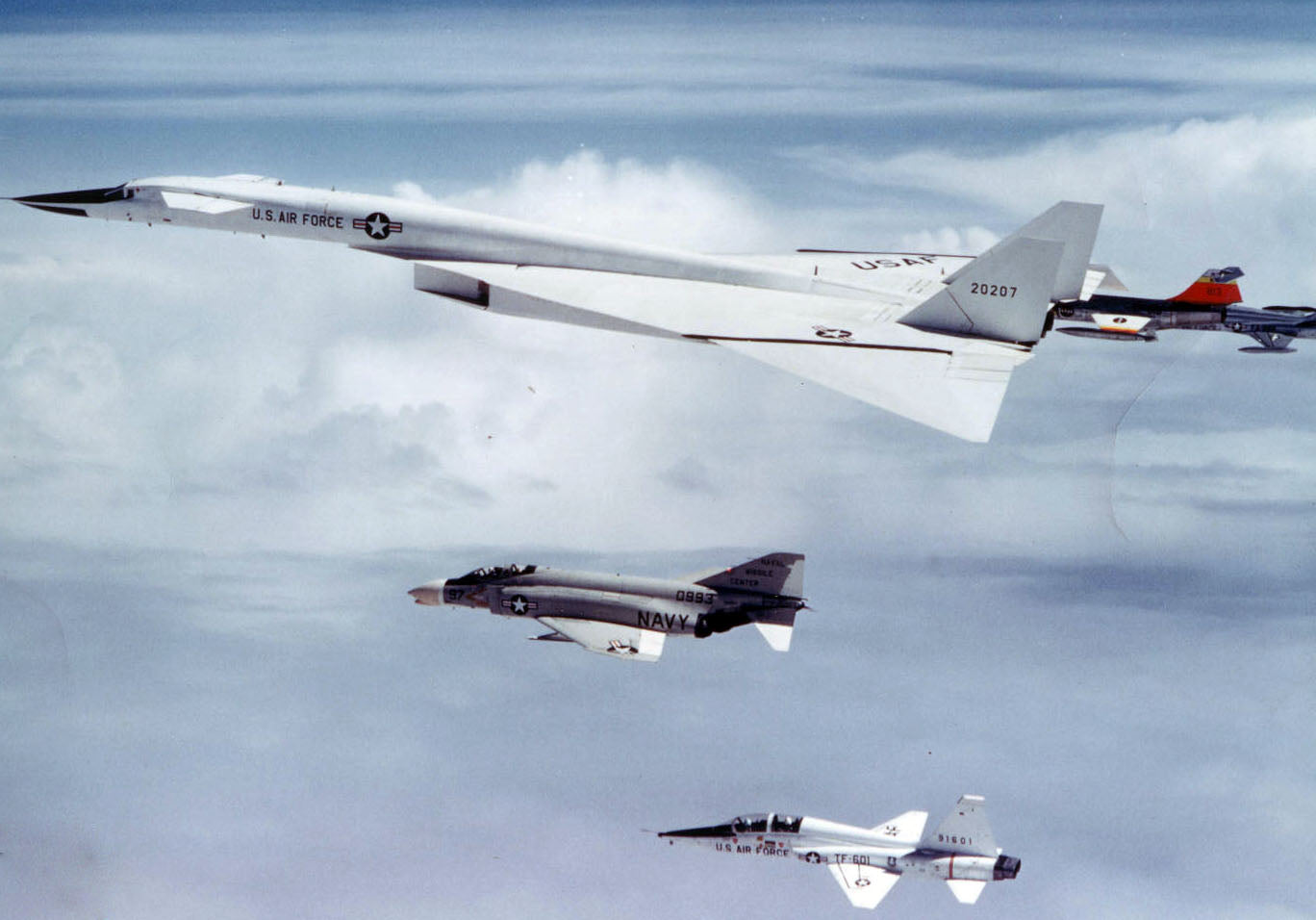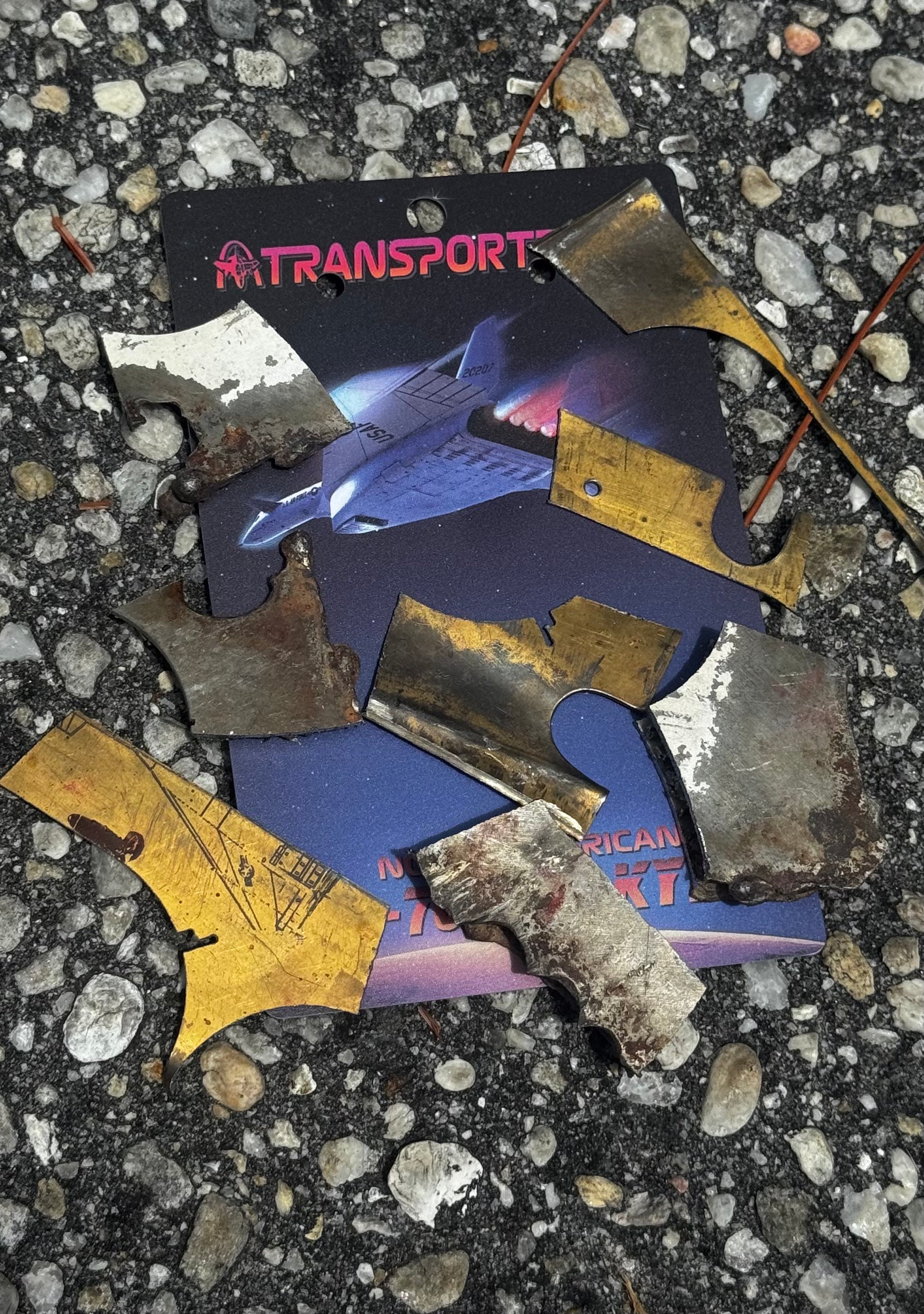XB-70 Valkyrie
XB-70 Valkyrie
Couldn't load pickup availability
The North American XB-70 Valkyrie was a groundbreaking experimental supersonic bomber developed in the 1950s and 1960s as part of the U.S. Air Force’s quest for a high-altitude, Mach 3-capable strategic aircraft to outpace Cold War threats. Designed to fly at speeds over 2,000 mph and altitudes exceeding 70,000 feet, it featured advanced delta wings, six powerful General Electric YJ93 engines, and innovative materials like stainless steel honeycomb panels for heat resistance.
Only two prototypes were built, with the program shifting from bomber development to research on supersonic flight after production was canceled due to evolving missile technology and costs.
In 2025, TransportTags was offered the opportunity to obtain material from the second prototype. This material is unique in that it was comprised of substantial pieces that were large and flat, perfect to create tags with. While other pieces exist in various collections, our larger, thicker flight test materials are one of a kind. Other XB-70 parts held by collectors are from the third aircraft that was never flown, making our authentic flight test material incredibly rare.
In Honor of Our Heroes
A portion of proceeds from this product will be donated to the Blue Angels Foundation, a nonprofit supporting wounded veterans. Their mission includes funding vital services such as housing, PTSD treatment, suicide prevention, counseling, life skills training, and employment assistance, helping veterans transition to civilian life with dignity and purpose.
(Please note that TransportTags, LLC is NOT an authorized or licensed distributor of North American or The United States Air Force, and uses their name, markings, etc. for identification purposes ONLY in accordance with the Lanham Act).
Vehicle History
Vehicle History
The XB-70 Valkyrie began as a bold vision in the mid-1950s, when the U.S. Air Force sought a high-altitude, supersonic strategic bomber to replace the B-52. Conceived amid Cold War tensions, the project aimed for Mach 3 speeds and operations at 70,000 feet to evade Soviet defenses. North American Aviation won the design competition against Boeing in December 1957, evolving the concept from the initial WS-110A weapon system into the B-70 program. Development faced challenges, including shifting priorities toward ICBMs and anti-aircraft missiles, leading President Eisenhower to cancel full production in 1959, though it was briefly revived under Kennedy before being scaled back to prototypes in 1961.
The XB-70’s manufacture kicked off with two prototypes built by North American at their Palmdale facility, powered by six General Electric YJ93 engines. The first, AV-1, rolled out in 1964 and made its maiden flight on September 21 that year, achieving Mach 3 but plagued by issues like structural cracks and engine problems. AV-2 followed in 1965, but tragedy struck in 1966 when it collided mid-air with an F-104 during a photo shoot. XB-70 pilot Al White ejected and survived with injuries, but co-pilot Major Carl Cross of the U.S. Air Force and F-104 pilot Joseph A. Walker of NASA perished in the accident.
In honor of the pilots who perished, we will be making a donation to the Blue Angels Foundation - a nonprofit organization dedicated to supporting wounded veterans by providing funding for critical services such as housing, post-traumatic stress treatment, suicide prevention, counseling, life skills, and employment opportunities to help them transition back to civilian life with dignity and purpose. For more details on this wonderful organization, we encourage you to visit their official website at https://blueangelsfoundation.org/.
Despite the complications and tragedy, it should be noted that the XB-70 program provided invaluable data for future aviation, symbolizing American engineering ambition, and leaving a lasting legacy along with tremendous respect for the aircraft and all of those who were involved in the program. The program, costing over $1.5 billion, shifted to research for supersonic transport under NASA, yielding valuable data until AV-1’s retirement in 1969.

Product Specifics
Product Specifics
Multiple variants available. Tag back will be blank unless customization is requested at checkout.
Vehicle Stats
Vehicle Stats

• Crew: 2 (pilot and co-pilot for the prototypes)
• Length: 185 ft (56.4 m)
• Wingspan: 105 ft (32 m)
• Height: 30 ft (9.1 m)
• Empty Weight: 253,600 lb (115,000 kg)
• Max Takeoff Weight: 542,000 lb (246,000 kg)
• Engines: 6 × General Electric YJ93 afterburning turbojets, each producing 28,000 lbf (124 kN) thrust with afterburner
• Maximum Speed: Mach 3.1 (2,056 mph or 3,310 km/h)
• Cruise Speed: Mach 3 (2,000 mph or 3,220 km/h)
• Range: 4,288 miles (6,900 km)
• Service Ceiling: 77,350 ft (23,600 m)
Product Dimensions
Product Dimensions
Card Dimensions
Length: 5 1/2"
Width: 3 1/2"
Tag Dimensions
Length: 3"
Width: 1.75"
Thickness:
Regular Tags: 1.3mm - 6.8mm
Thick Tags: 9.1mm - 10.5mm
Disclaimer
Disclaimer
TransportTags are unique, handcrafted pieces made from genuine vehicle skin. Features like scratches, blemishes, or minor discolorations testify to their unique vintage appeal and authenticity. By purchasing, you accept the product may differ slightly from website images. Transport Tags LLC uses authentic material from transportation vehicles, potential containing hazardous substances. Not intended for ingestion, inhalation, or use by small children. Transport Tags LLC is an independent company, not affiliated with, sponsored or endorsed by any entities. We use branded names and insignia for identification under the provisions of the Lanham Act, without implying any association or endorsement. For more information, read our detailed product safety and legal information here.
Share
